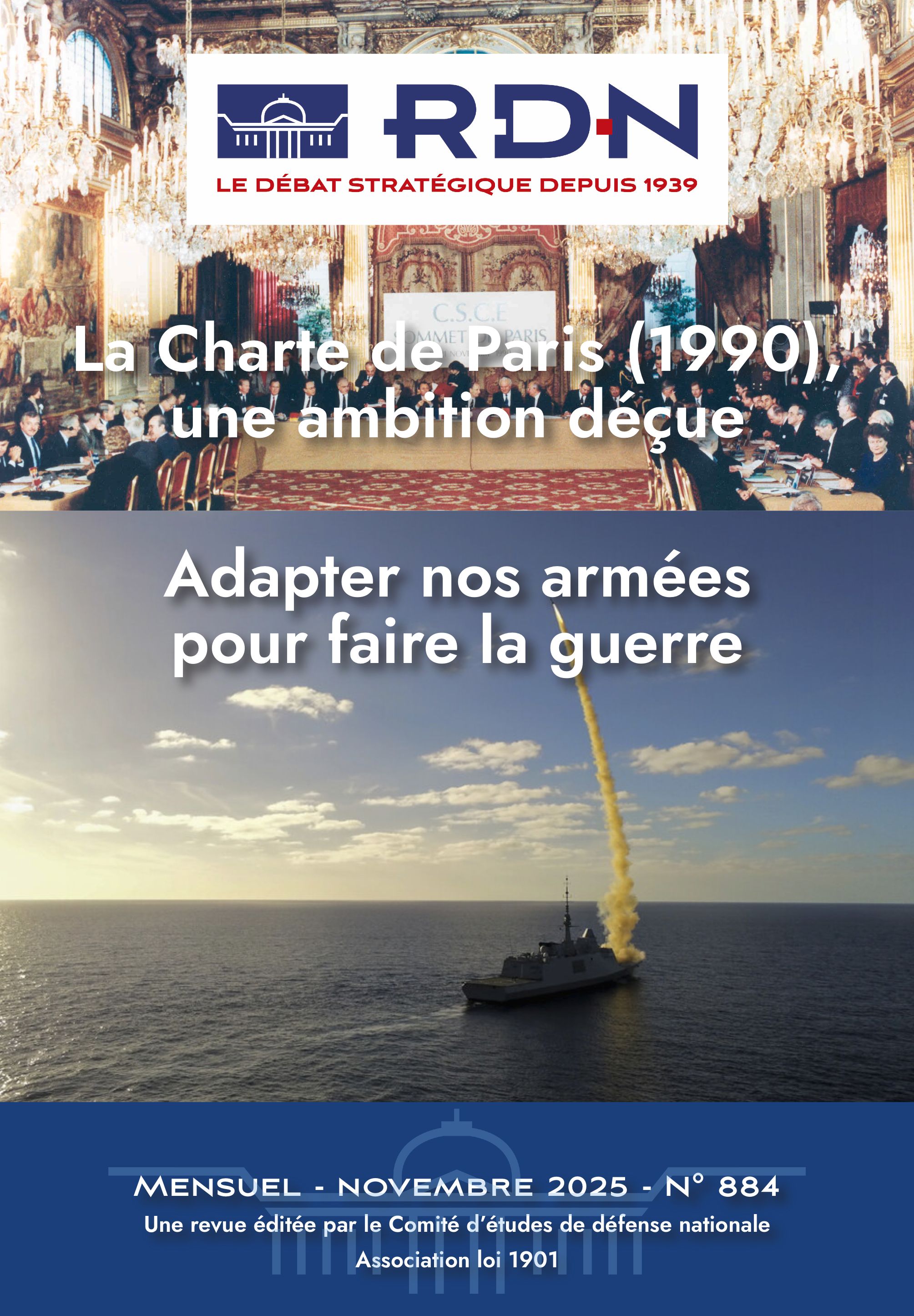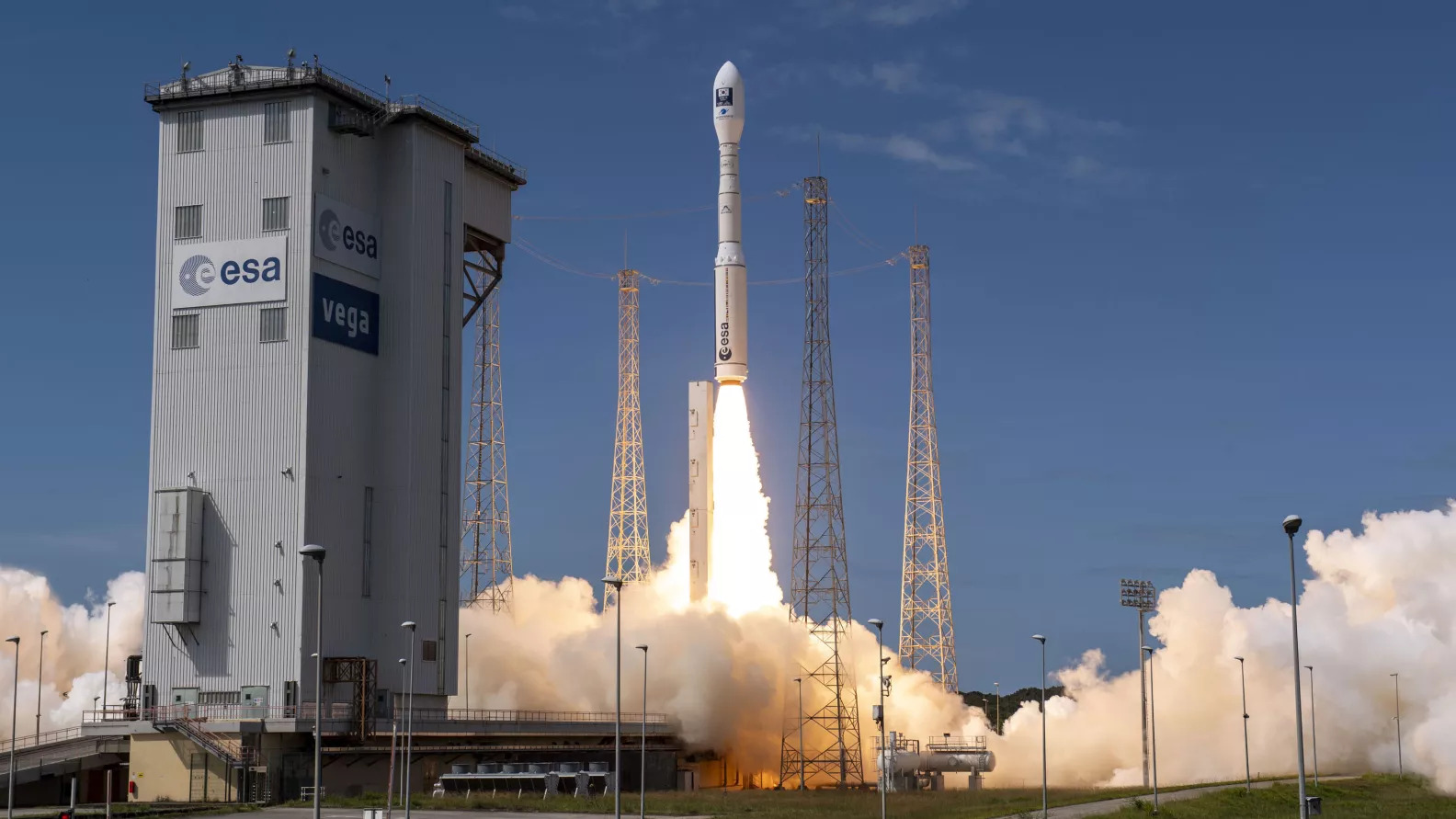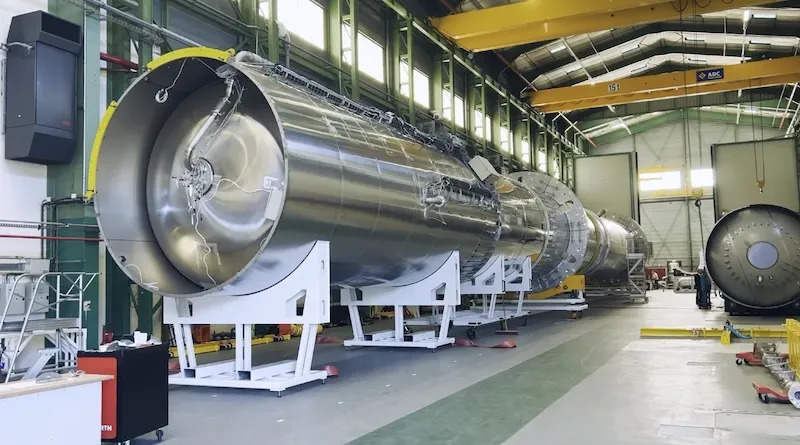The US Air Force and the French Air and Space Force share common history, but also priorities and challenges in today’s technological and political environment. Regarding the threats that are looming on the horizon, both must engage in strategic thinking based on four priorities: readiness, preparedness, sustainability and interoperability.
Remaining a Day-One Player Along with the United States Air Force in a High-End Coalition: the Challenge of Interoperability
Interoperability: The ability to act together coherently, effectively, and efficiently to achieve tactical, operational, and strategic objectives.
DoD Dictionary of Military and Associated Terms, (U) (2021, 110)
In Allies That Count–Junior Partners in Coalition Warfare, the French professor Olivier Schmitt explains that the utility of a junior partner’s contribution depends on “whether the junior partner has a high degree of standing in the international system or on whether its military contribution is both integrated and of a sufficient technological quality to cooperate with US forces.”(1)
While roughly a tenth of the size, some considers the French Air and Space Force (FASF) the United States Air Force’s (USAF) most near-peer partner, one that is a fully capable, full-spectrum Air Force, backed by the political willingness to act. Admittedly, France remains a junior partner to the US in any Washington-led coalition, and asymmetry will remain a structural feature of the transatlantic ties for the foreseeable future. Yet, France is an Ally that counts, as much as for its political standing and willingness to use its forces abroad, as for the high-end, full spectrum capability of its forces. This explains why Minister of the Armed Forces Sebastien Lecornu and Secretary of Defense Llyod Austin signed a renewed joint statement in November 2022, reaffirming “the need to enhance our defense cooperation in order to enable our forces to jointly address the array of threats we face.”(2) And as Chief of Staff of the USAF General CQ Brown noted in his directive to “Integrated by Design”, Allies, including the FASF and the USAF, need to “collaborate and make decisions together on interoperability, resource investment, information sharing, force development and strategy from the very beginning”.
The FASF has long been a Day-One player in coalitions and conflicts along with the USAF and have started to collaborate more closely with the United States Space Force (USSF). This relationship must not be taken for granted, as there is risk of an “innovation gap” between the two sides of the pond and the emergence of a restricted “F-35 club” in Europe, from which the FASF would be excluded. As such, our two Air Forces must keep pushing hard in enabling them to operate effectively together in a high-end coalition, in a consistent and mutually reinforcing manner. If a lot has already been made, there is still “many a slip ‘twixt the cup and the lips” to overcome the existing barriers.
An already strong cooperation is in place
As America’s oldest ally, France has a long history of cooperation with the United States that we can continue to build on. As epitomized by American Ace Eddie Rickenbacker who flew french planes Nieuport 28 and the SPAD XIII in the “Hat-in-the-Ring” Squadron in WWI and the first African-American military pilot Eugene Bullard who joined the Lafayette Flying Corps in 1916, our Air Force roots run deep as well. Similarly, WWII saw French Airmen at the controls of US warplanes, partnering together across the breadth of Air missions. In a more recent past, operations in Iraq (1991), Bosnia (1992-1995), Kosovo (1999), Afghanistan (2002-2013), Libya (2011) and the Levant (since 2014) highlight that the FASF and the USAF have long been fighting alongside each other.
Operation Hamilton in April 2018 saw the French Rafale hold the overall Mission Commander role, with USAF B-1s, F-15s, F-16s and F-22s along with Royal Air Force Typhoon, engaged in combined air strikes on Syria, following the use of chemical weapons by the regime. This operation demonstrated the FASF’s “Day-One player” prowess and serves as a model of interoperability, both in the planning and in execution of real-world present day kinetic warfare, albeit without a credible air or ground defense. In both the CENTCOM and AFRICOM AORs, the FASF is performing combat, combat support, ISR and tactical airlift missions throughout these theaters in close collaboration with the USAF.
Additionally, since 2018 the FASF have annually sent Rafale fighters, KC-135s & A330 MRTTs air-to-air refueling aircraft, and its new A400M airlift aircraft to the Indo-Pacific AOR to perform high intensity training in French territories as well as training, security cooperation (SC) and strategic messaging in this region. In 2021, the FASF conducted the HEIFARA mission and reached Polynesia in less than 48 hours and immediately generated fighter sorties after a projection of more than 17,000 km. After this initial phase, the FASF conducted air maneuvers with US Pacific Air Force’s F-22As during WAKEA exercises to increase interoperability. Later this summer, the FASF will participate in the INDO-PACOM Large Scale Global Exercise (LSGE) with several Rafale, tankers and airlift aircraft in Guam alongside US F-35s. In addition to the LSGE, the FASF will engage with other French partners throughout the region, with SC stops in Singapore, Malaysia, the UAE, South Korea and Japan, and the French territories of France, intending to strengthen French cooperation in the Pacific while supporting its Ministry of Armed Forces Indo-Pacific policy in the region where it has territories, citizens and interests.
Overall, FASF and USAF share a common strategic vision that uncontested air dominance is no longer assured, and our Air Forces must adapt to win in highly contested environments and contribute effectively to the joint warfighting effort. Beyond exercises and operations, the current operational Framework of bi-lateral cooperation includes Operational Engagement Talks, with proposals for a similar construct in the A5 lane as well as annual Vice Air Chief talks. Strong synergies exist between USAFE (USAF in Europe) and the FASF, particularly in USAFE’s 603rd AOC and the FASF’s CDAOA, reinforced by a tri-lateral FRUKUS (France-United Kingdom-United States) Air Force partnership. Last year for instance, this trilateral strategic initiative saw France host an Atlantic Trident exercise with 12 USAF F-35s at a French Airbase for over a month, the first time F-35s operated from a non-F-35 country. Later this year, the UK will host the next Atlantic Trident exercise, featuring F-35s and Rafale employing advanced tactics, techniques, and procedures in a full spectrum of mission sets.
France and the United States have also long been partners in the Space domain. France is considered as a top priority by the US Space Command in terms of cooperative efforts. Indeed, France has capabilities and a strong industrial basis all along the Space spectrum, not to mention has key terrain throughout the globe in strategic locations which serve as useful real estate for ground-based SSA capabilities. Most importantly France and the United States “have a common assessment of threats and share the ambition to confront them accordingly”, as recalled in the December 2022 joint statement of intent. For all these reasons, our two countries are constantly enhancing our cooperation in the Space domain and have leveraged the Defense Space Cooperation Forum since 2009 “to advance shared objectives, such as information-sharing, developing mutual education and training opportunities, and building towards combined operations”.
Grab the challenges ahead by the horns
Notwithstanding, if the FASF is to continue to play its part, it must not be complacent nor rest on its laurels. By the same token, the USAF must strive to make General Brown’s “integrated by design” imperative a reality rather than an aspiration which does not hold under scrutiny. This double effort is paramount to overcome the existing barriers to a deeper and wider collaboration.
First, the word “integration” may be understood differently from the two sides of the Atlantic. As CSAF General Brown explained during the International Air Chiefs Conference in September 2022, “Integrated by Design’ is the USAF’s approach to developing people, policies, and processes, starting with Allies and Partners in mind”. The core idea is not new, but emphasizes execution rather than discussions, to “collaborate and make decisions together on interoperability, resource investment, information sharing, force development and strategy from the very beginning”. In other words, it aims at increasing integration at institutional and tactical levels, to maintain the leading edge over competitors. France is of course very supportive of this philosophy and is eager to see it become a reality.
But “Integration” also entails industrial risks for France, as a junior partner—albeit a very important one—to the US when integration and interoperability consists in providing allies and partners with more American military equipment. This is why France is careful about the concept of “interchangeability”, coined by the UK Chief of the Defence Staff Admiral Sir Tony Radakin: admittedly, it would be “the holy grail of tactical integration because it would dramatically ease the burden of planning coalition operations” but it would also come with a high level of dependence vis-à-vis the United States. In addition, US International Traffic in Arms regulation (ITAR) complicates cooperation between France and the US at the industrial level. In short, ITAR and the ever increasing US defense industrial muscle shed light on the difficulty for France to overcome the conundrum between a better integration with the US in all warfighting domains and the preservation of its strategic autonomy; the latter must not be understood in terms of decoupling, but rather self-sufficiency, that is the ability to provide more resources and the willingness to take more responsibilities for its own defense. Indeed, you can be part of an alliance, and yet be seeking for self-reliance in the face of new threats and security issues. To quote the former French Minister of Armed Forces: “Hesitating between strategic autonomy and Atlantic alliance is a bit like asking a child if he prefers his mother or his father”.
For France, interoperability with the US, in particular, is essential to be able to continue to operate together seamlessly like we have over the last 100 years. One of the biggest challenges for the FASF will be to remain a “Day One player” with the USAF while preserving its ability to act independently, when necessary, in particular for the nuclear deterrent mission. Yet this challenge is daunting with by the massive arrival of the F-35 in Europe which makes it more difficult for France, as the FASF will not operate Lockheed Martin’s flagship. It is a challenge for France, it is a challenge for NATO. In the current operating environment, with the resurgence of near peer competitors, the French Vice Chief General Parisot regularly warns that we cannot afford to have divided air power within NATO: the F-35 community and the others. Added to this current challenge of interoperability of the French Rafale frontline fighter with the growing F-35 nations and the JADC2/ABMS command and control networks is the fact that both the US and France are working on the next generation of fighter, command & control, and networked systems-of-systems, and it’s critical that we are not developing these advanced systems without “Integrating by Design” from the start.
A new framework to move ahead
“Coming together is a beginning. Keeping together is progress. Working together is success.”
Henry Ford
There is no further need to quibble about semantics, but rather to focus on actual implementation. To face the challenges ahead, overcome barriers to a better integration at all levels, be ready to win as a team in highly contested air and space environment, and contribute effectively to the joint warfighting effort, the FASF and USAF could strengthen their cooperation along several lines of engagement, currently being staffed by both our Air Forces.
The first one concerns strategy, concept and doctrine. Indeed, interoperability is not only about technology and datalink. Gen Brown’s “integration by design” imperative starts as soon as the definition of strategy, the deliberation and calculus regarding future threats as well as defining the operational approaches and future concepts and doctrines, to best define a combined approach against a common military challenge. Future operational concepts and analysis, such as wargames, scenarios, TTX or combined planning can help fix the gap in mutual understanding and discuss theories of air power. Far from being exhaustive, the list includes: (i) Human-To-Autonomy teaming; (ii) Collaborative Combat Aircraft; (iii) resilient basing and agile combat employment; (iv) Joint All-Domain C2 and advances battle management; (v) near-space operations, etc. Concerning the latter, the Chinese spy balloon which floated across the US in early February could ignite a new avenue of cooperation between the USAF and the FASF, as France is about to release its strategy of Higher Airspace Operations in the one hand (HAO), President Biden has announced that an interagency review was underway “to study the broader policy implications for detection, analysis, and disposition of unidentified aerial objects that pose either safety or security risks” on the other hand.
Information sharing is vital to the success of multinational and bilateral operations, as discussed earlier. Consequently, the FASF and USAF can work on overcoming institutional barriers to change the information-sharing paradigm to allow more routine operational exchange of information.
The FASF and USAF acknowledge the dual value of common exercises, both for readiness and strategic signalling. As such, we can better synchronise planning whenever it is possible and desirable. FASF participation in the US PACOM-led Large Scale Global Employment 2023 offers a threefold opportunity: increase interoperability, test Agile Combat Employment concepts with PACAF; and signal French commitment to protect its interests in the region. Similarly, Atlantic Trident 2023 and other exercises offer similar opportunities in the European theatre.
Education & Training are a critical line of efforts, whether it be through professional military education, combined training or specific formations, as well as expanding exchange and liaison officers positions within each other’s operational units and staffs.
Additionally, the USAF and FASF could strengthen their cooperation in terms of capability development (including innovation) in relation with the French Procurement Agency and USAF/A5 for example, and within the joint Cooperative Oversight of Programs process (COOP) to consider the incorporation of each other’s priorities, technology and systems much earlier in the development process, such as with the French FCAS/NGF(3) and the USAF’s NGF as well as other advanced and future systems.
In parallel, the FASF and the US Space Force and US SPACECOM will continue to advance partnerships in the framework of the terms of reference signed in 2022 to develop information-sharing at increased levels of security classification, develop mutual education and training opportunities, and build towards combined operation in Space.
Conclusion
“There is only fertile the great collaboration of the one through the other. And the failed step serves the successful one. And the successful step shows the path to the common end state to the one who missed his.”
Saint Exupery (legendary French Aéropostale and French Air Force pilot and author of the Little Prince)
The FASF and the USAF must keep on working together to be more integrated by design. Yet integration does not mean assimilation and FASF will have to balance the need to strengthen integration with the preservation of its autonomy – for nuclear deterrence and for its industrial policy and in terms of strategic signalling. Admittedly and having observed, France is a very demanding ally, but reliable as much for its capabilities as for its will to use force when necessary. It is particularly true in the air and space domains, where France is—and must stay—a day-one player along with the United States.
In short, France and the US must continue to foster a comprehensive reflection on air and space domains, to discuss threats and challenges, and above all things, to put forward concrete policy orientations. Four key words must shape our strategic thinking: readiness, preparedness, sustainability, and interoperability to hedge against a more demanding future.
The new framework proposed is an opportunity to nourish ourselves on each other’s experiences and perspectives in order to facilitate future military engagement and protect our common security interests. We can only be stronger together and as would say the famous French airman and writer Antoine de Saint-Exupéry, “there is only fertile the great collaboration of the one through the other”. ♦
(1) Schmitt Olivier. Allies That Count: Junior Partners in Coalition Warfare. Georgetown University Press, 2018. https://doi.org/10.2307/j.ctvvnh5h.
(2) Joint Statement of Intent between Mr. Lloyd Austin, Secretary of Defense of the United States of America and Mr. Sébastien Lecornu, Minister of the Armed Forces of the French Republic, 30th November 2022. https://www.defense.gouv.fr/.
(3) Future Combat Air System/Next Generation Fighter.









